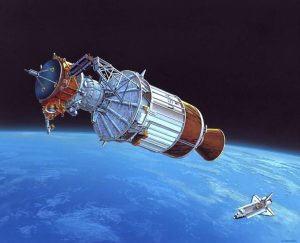- This topic is empty.
-
AuthorPosts
-
07/04/2025 at 14:26 #4537
When it comes to choosing a printer, many consumers gravitate towards inkjet models due to their affordability and versatility. However, while inkjet printers offer several advantages, they also come with a range of downsides that can significantly impact user experience and long-term costs. In this post, we will delve into the less-discussed drawbacks of inkjet printers, providing a comprehensive overview that will help you make an informed decision.
1. Cost of Consumables
One of the most significant downsides of inkjet printers is the ongoing cost of consumables, particularly ink cartridges. While the initial purchase price of an inkjet printer may be lower than that of a laser printer, the cost of replacement ink can quickly add up. Many manufacturers design their ink cartridges to hold a limited amount of ink, leading to frequent replacements. Additionally, some printers use multiple cartridges for different colors, which can result in higher costs if one color runs out before the others. This ink trap can make inkjet printers more expensive to operate over time than their laser counterparts.
2. Print Speed and Efficiency
Inkjet printers are generally slower than laser printers, particularly when it comes to high-volume printing tasks. For users who require quick printouts, especially in a business environment, the slower print speeds of inkjet models can be a significant drawback. Furthermore, the time it takes for an inkjet printer to warm up and start printing can lead to inefficiencies, particularly in busy office settings where multiple users need access to a printer.
3. Print Quality and Longevity
While inkjet printers are known for their ability to produce high-quality color prints, they can struggle with longevity. Inkjet prints are more susceptible to fading over time, especially when exposed to sunlight or moisture. This can be a critical consideration for users who need archival-quality prints. In contrast, laser printers typically use toner that is more resistant to fading and smudging, making them a better choice for documents that need to last.
4. Maintenance and Reliability
Inkjet printers often require more maintenance than laser printers. Clogged nozzles and dried ink can lead to print quality issues, necessitating regular cleaning cycles. This maintenance can be time-consuming and frustrating for users who expect a hassle-free printing experience. Additionally, inkjet printers can be less reliable than laser printers, with a higher likelihood of mechanical failures, particularly in lower-end models.
5. Environmental Impact
The environmental impact of inkjet printers is another consideration that is often overlooked. Ink cartridges are typically made from plastic and can contribute to landfill waste if not properly recycled. Moreover, the production of ink itself can involve harmful chemicals and processes that are detrimental to the environment. While some manufacturers offer recycling programs, the overall sustainability of inkjet printing remains a concern.
6. Limited Paper Handling Capabilities
Many inkjet printers have limited paper handling capabilities compared to laser printers. They often have smaller input trays and may struggle with heavier or specialty papers. This can be a significant limitation for users who need to print on various media types, such as cardstock or photo paper. In contrast, laser printers are generally designed to handle a wider range of paper types and sizes, making them more versatile for diverse printing needs.
Conclusion
While inkjet printers can be an excellent choice for casual users and those who prioritize color printing, it is essential to weigh the downsides before making a purchase. The ongoing costs of ink, slower print speeds, maintenance requirements, and environmental considerations can all impact your overall satisfaction with the device. By understanding these potential pitfalls, you can make a more informed decision that aligns with your printing needs and budget.
-
AuthorPosts
- You must be logged in to reply to this topic.


